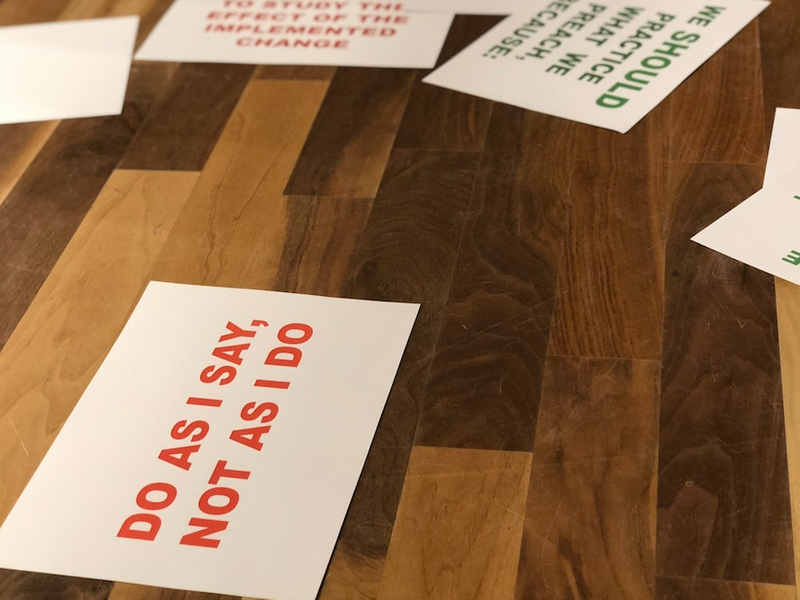
This logo isn't an ad or affiliate link. It's an organization that shares in our mission, and empowered the authors to share their insights in Byte form.
Rumie vets Bytes for compliance with our
Standards.
The organization is responsible for the completeness and reliability of the content.
Learn more
about how Rumie works with partners.
 Photo by Annie Spratt on Unsplash
Photo by Annie Spratt on UnsplashWhy is it that some people seem to fly off the handle or retreat into themselves when they face stressful situations?
Then, there are those who seem to work through tough times and aggravating scenarios with grit and grace.
What causes someone to react to their emotions in ways that are not in their best interest?
What is emotional dysregulation?
 Photo by Nik on Unsplash
Photo by Nik on UnsplashEmotional dysregulation is a term used to describe the extreme emotional response to some sort of trigger.
When someone is emotionally dysregulated, they might have angry outbursts, be anxious, depressed, withdraw, or even inflict harm on themselves. The response is out of proportion when compared to the trigger.
Emotional dysregulation is typically thought of as something children experience, but it can carry on into adulthood.
What are the causes of emotional dysregulation?

There is no single cause of emotional dysregulation for everyone who experiences it, but there are two primary causes that are backed by research.
These two factors are related, but distinct:
Childhood psychological trauma
Environmental factors
Additionally, some people experience emotional dysregulation without any clear causes.
The outcomes of emotional dysregulation

Ruining relationships by blowing things out of proportion
Holding grudges
Trouble resolving conflict

Fixating on negative experiences
Developing substance abuse issues
Developing mental health disorders
Non-suicidal self-harm
Quiz
Which of the following are examples of someone experiencing emotional dysregulation? Select all that apply:
Reactions that are extreme compared to the trigger can look different for different people. It could be yelling or it could be withdrawing.
The role of trauma in emotional dysregulation
 Photo by Harris Ananiadis on Unsplash
Photo by Harris Ananiadis on UnsplashChildhood traumas — child maltreatment, and interpersonal violence — are predictors of emotional dysregulation in adults. Two key research findings related to childhood trauma are:
People exposed to trauma at any age had higher rates of emotional dysregulation than those not exposed to trauma at all.
Those who experienced trauma between the ages of 6-10 had higher rates of emotional dysregulation than people exposed to trauma at different ages.
The role of environment in emotional dysregulation

Trauma isn't the only cause of emotional dysregulation. Our environment and how we learn to express emotions can have an impact too:
Children learn how to regulate their emotions by watching the people around them.
If a parent or caregiver lacks the skills to regulate their emotions, the child won't learn how to regulate theirs.
Parents can also encourage or dismiss emotional expression. When emotional expression is rejected or punished, it can lead to emotional dysregulation later on.
Quiz
Which of the following would be an effective way to help a child develop healthy emotional regulation skills? Select all that apply:
Research shows that children learn emotional regulation from what is modeled by those around them. Books provide an opportunity to learn in a calm environment.
Emotional regulation is learned

Emotional dysregulation is treated with therapy and by learning strategies to manage emotions.
Dialectical behavior therapy (DBT) is a type of therapy that focuses on building emotional regulation skills. The four major skills it teaches are:
Mindfulness — experience emotions without judgment
Emotion regulation — understand emotions and feelings
Interpersonal effectiveness — interact with people in a healthy way
Distress tolerance — how to deal with stressful situations
Medication is also an option for those with underlying mental health conditions.
Take Action
 Photo by Siavash Ghanbari on Unsplash
Photo by Siavash Ghanbari on UnsplashThere is much more to learn about emotional dysregulation and regulation research on adults and children.
Get started with one of the following links:
This Byte has been authored by
Cassandra Lock
Educator and Instructional Designer
M. Ed.